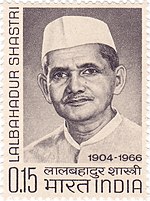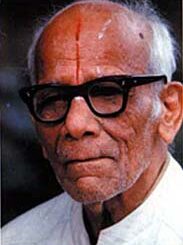A Complete History of the Russia-Ukraine Conflict

The complete history of the Russia-Ukraine conflict is a long and complex one, but it can be broadly divided into three periods:
1. The Soviet Era (1922-1991)
Ukraine became part of the Soviet Union in 1922. During this period, the Soviet government suppressed Ukrainian nationalism and culture. Ukrainians also suffered greatly during the Soviet famines of the 1930s and the Stalinist purges of the 1930s-1940s.
2. The Post-Soviet Era (1991-2014)
Ukraine gained its independence from the Soviet Union in 1991. In the years that followed, Ukraine sought to develop closer ties to the West, including NATO and the European Union. However, Russia continued to view Ukraine as part of its sphere of influence and was opposed to Ukraine’s integration with the West.
3. The Russia-Ukraine War (2014-Present)
In 2014, a pro-Western revolution in Ukraine overthrew a pro-Russian government. This led to a civil war in eastern Ukraine, which Russia supported. Russia also annexed the Crimean Peninsula from Ukraine in 2014. In February 2022, Russia launched a full-scale invasion of Ukraine.
Here is a more detailed timeline of the key events in the Russia-Ukraine conflict:
1922: Ukraine becomes part of the Soviet Union.
1932-1933: The Soviet famine kills millions of Ukrainians.
1936-1938: The Stalinist purges kill hundreds of thousands of Ukrainians.
1991: Ukraine gains its independence from the Soviet Union.
1994: Ukraine signs the Budapest Memorandum, in which Russia, the United States, and the United Kingdom guarantee Ukraine’s sovereignty and territorial integrity in exchange for Ukraine giving up its nuclear weapons.
2004: The Orange Revolution in Ukraine overthrows a pro-Russian government and installs a pro-Western government.
2008: NATO announces that Ukraine and Georgia will eventually become members of the alliance. Russia strongly opposes this decision.
2010: Viktor Yanukovych, a pro-Russian politician, is elected president of Ukraine.
2013: The Euromaidan protests begin in Ukraine after Yanukovych suspends preparations for an association agreement with the European Union.
2014: Yanukovych is overthrown in the Revolution of Dignity. Russia annexes Crimea from Ukraine and supports pro-Russian separatists in eastern Ukraine.
2015: The Minsk agreements are signed, which are intended to end the conflict in eastern Ukraine. However, the agreements are never fully implemented.
2022: Russia launches a full-scale invasion of Ukraine.
The Russia-Ukraine conflict is a complex and ongoing conflict. It is important to understand the history of the conflict in order to understand the present and to work towards a peaceful resolution.
1. The Soviet Era (1922-1991)
The Soviet Era (1922-1991) was a period of significant change and upheaval for Ukraine. Ukraine became part of the Soviet Union in 1922, and the Soviet government immediately began to suppress Ukrainian nationalism and culture. The Soviet government also implemented a number of economic and social policies that had a negative impact on Ukraine.
One of the most significant events of the Soviet Era was the famine of 1932-1933. The famine was caused by a combination of factors, including the Soviet government’s collectivization of agriculture and its export of grain from Ukraine to other parts of the Soviet Union. The famine killed millions of Ukrainians, and it is estimated that up to 25% of the Ukrainian population died.
Another significant event of the Soviet Era was the Stalinist purges of the 1930s-1940s. During the purges, the Soviet government executed or imprisoned millions of people, including many Ukrainians. The purges had a devastating impact on Ukraine’s intelligentsia and its cultural and political elite.
Despite the repression and hardship of the Soviet Era, Ukrainians continued to resist and assert their national identity. In the 1960s and 1970s, there was a revival of Ukrainian nationalism and culture known as the Dissident Movement. The Dissident Movement was led by a group of intellectuals and artists who called for greater freedom and democracy in the Soviet Union.
The Soviet Era came to an end in 1991 with the collapse of the Soviet Union. Ukraine gained its independence in 1991, and it began to transition to a democracy and a market economy.
Here is a summary of the key events of the Soviet Era in Ukraine:
- 1922: Ukraine becomes part of the Soviet Union.
- 1932-1933: The famine of 1932-1933 kills millions of Ukrainians.
- 1936-1938: The Stalinist purges kill hundreds of thousands of Ukrainians.
- 1960s-1970s: The Dissident Movement calls for greater freedom and democracy in the Soviet Union.
- 1991: Ukraine gains its independence from the Soviet Union.
2. The Post-Soviet Era (1991-2014)
The Post-Soviet Era (1991-2014) was a time of both great change and great challenge for Ukraine. Ukraine gained its independence from the Soviet Union in 1991, and it began to transition to a democracy and a market economy. However, the transition was difficult, and Ukraine faced a number of economic and political challenges.
One of the biggest challenges of the Post-Soviet Era was the transition to a market economy. Ukraine’s economy was heavily dependent on the Soviet Union, and it had to be restructured to compete in a globalized market. This transition was painful, and it led to a decline in living standards for many Ukrainians.
Another challenge of the Post-Soviet Era was the rise of corruption. Ukraine’s government was weak and ineffective, and it was susceptible to corruption. Corruption made it difficult for Ukraine to attract foreign investment and to develop its economy.
Ukraine also faced a number of political challenges in the Post-Soviet Era. There was a deep divide between Ukraine’s pro-Russian and pro-Western factions. This division led to political instability and made it difficult for Ukraine to develop a coherent national identity.
Despite these challenges, Ukraine made some progress in the Post-Soviet Era. The country held several free and fair elections, and it developed a civil society sector. Ukraine also began to integrate with the West, signing association agreements with the European Union and NATO.
However, the Post-Soviet Era came to an abrupt end in 2014 with the Russian annexation of Crimea and the outbreak of the war in eastern Ukraine. The war has had a devastating impact on Ukraine, both economically and humanly.
Here is a summary of the key events of the Post-Soviet Era in Ukraine:
- 1991: Ukraine gains its independence from the Soviet Union.
- 1994: Ukraine signs the Budapest Memorandum, in which Russia, the United States, and the United Kingdom guarantee Ukraine’s sovereignty and territorial integrity in exchange for Ukraine giving up its nuclear weapons.
- 2004: The Orange Revolution overthrows a pro-Russian government and installs a pro-Western government.
- 2008: NATO announces that Ukraine and Georgia will eventually become members of the alliance. Russia strongly opposes this decision.
- 2010: Viktor Yanukovych, a pro-Russian politician, is elected president of Ukraine.
- 2013: The Euromaidan protests begin in Ukraine after Yanukovych suspends preparations for an association agreement with the European Union.
- 2014: Yanukovych is overthrown in the Revolution of Dignity. Russia annexes Crimea from Ukraine and supports pro-Russian separatists in eastern Ukraine.
The Post-Soviet Era was a time of both great change and great challenge for Ukraine. The country has made some progress, but it still faces a number of obstacles to its development. The war in eastern Ukraine has had a devastating impact on the country, and it has made it difficult for Ukraine to achieve its full potential.
3. The Russia-Ukraine War (2014-Present)
The Russia-Ukraine War (2014-Present) is an ongoing conflict between Russia and Ukraine that began in February 2014. The war has its roots in the Ukrainian Revolution of Dignity, which overthrew a pro-Russian government in Ukraine in 2014. Russia responded by annexing the Crimean Peninsula from Ukraine and supporting pro-Russian separatists in eastern Ukraine.
In February 2022, Russia launched a full-scale invasion of Ukraine. The war has had a devastating impact on Ukraine, both economically and humanly. Millions of Ukrainians have been displaced from their homes, and thousands have been killed. The war has also had a significant impact on the global economy, causing energy prices to soar and disrupting supply chains.
The Russia-Ukraine War is a complex and ongoing conflict. There is no easy solution to the conflict, and it is important to understand the history of the conflict in order to understand the present and to work towards a peaceful resolution.
Here is a summary of the key events of the Russia-Ukraine War (2014-Present):
- 2014-02-22: The Ukrainian Revolution of Dignity begins.
- 2014-03-20: Russia annexes the Crimean Peninsula from Ukraine.
- 2014-04-07: Pro-Russian separatists in eastern Ukraine declare independence from Ukraine and establish the Donetsk People’s Republic and the Luhansk People’s Republic.
- 2014-07-17: Malaysia Airlines Flight 17 is shot down over eastern Ukraine, killing all 298 people on board.
- 2014-09-05: The Minsk agreements are signed, which are intended to end the conflict in eastern Ukraine. However, the agreements are never fully implemented.
- 2015-02-12: The Minsk II agreements are signed, which are a revised version of the Minsk agreements. However, the agreements are also never fully implemented.
- 2022-02-24: Russia launches a full-scale invasion of Ukraine.
- 2022-03-02: Russian forces capture Kherson, the first major Ukrainian city to fall.
- 2022-03-09: Russian forces begin a siege of Mariupol, a port city on the Sea of Azov.
- 2022-04-02: Ukrainian forces launch a counteroffensive and retake Bucha and Irpin, two towns near Kyiv.
- 2022-04-13: The Russian Navy sinks the Ukrainian flagship Moskva in the Black Sea.
- 2022-05-16: Russia captures the city of Severodonetsk, giving it control of the Luhansk region.
- 2022-07-29: Russia captures the city of Lysychansk, giving it control of the entire Donbas region.
- 2022-09-08: Ukraine launches a counteroffensive in the south of the country and retakes the city of Izium.
- 2022-11-03: The war continues, with no end in sight.
The Russia-Ukraine War is a complex and tragic conflict. It is important to stay informed about the war and to support the people of Ukraine.
The consequences of the Russia-Ukraine War
The consequences of the Russia-Ukraine War are far-reaching and complex, affecting both local communities and the global economy.
Local consequences
The war has had a devastating impact on Ukraine, with millions of people displaced from their homes and thousands killed. The country’s infrastructure has been severely damaged, and its economy has been crippled. The war has also caused a humanitarian crisis, with millions of people in need of food, water, and shelter.
In Russia, the war has led to a decline in living standards, as the government has imposed sanctions on Western countries and has increased military spending. The war has also led to a crackdown on dissent, with the government cracking down on independent media and anti-war protests.
Global consequences
The war has also had a significant impact on the global economy. The conflict has led to higher energy prices, as Russia is a major exporter of oil and gas. The war has also disrupted supply chains, as Ukraine is a major exporter of wheat and other commodities. The war has also led to increased uncertainty in the global financial markets.
The war has also had a political impact on the world order. The conflict has led to a widening rift between Russia and the West, and it has raised concerns about the future of European security. The war has also highlighted the need for a more robust global order that can deter aggression and promote peace and security.
In detail
Here is a more detailed look at some of the key consequences of the Russia-Ukraine War:
Economic consequences
- The war has caused energy prices to soar, as Russia is a major exporter of oil and gas. This has led to higher inflation and slower economic growth around the world.
- The war has also disrupted supply chains, as Ukraine is a major exporter of wheat and other commodities. This has led to shortages of food and other essential goods in some countries.
- The war has also led to increased uncertainty in the global financial markets. This has made it more difficult for businesses to invest and grow.
Humanitarian consequences
- The war has caused a humanitarian crisis in Ukraine, with millions of people displaced from their homes and thousands killed. The country’s infrastructure has been severely damaged, and its economy has been crippled.
- Millions of people in Ukraine are in need of food, water, and shelter. The war has also caused a surge in refugee flows to neighboring countries.
Political consequences
- The war has led to a widening rift between Russia and the West. The conflict has also raised concerns about the future of European security.
- The war has also highlighted the need for a more robust global order that can deter aggression and promote peace and security.
The Russia-Ukraine War is a complex and tragic conflict with far-reaching consequences. It is important to stay informed about the war and to support the people of Ukraine.
Possible Solutions to the Russia-Ukraine War
The Russia-Ukraine War is a complex and protracted conflict with no easy solutions. However, there are a number of possible solutions that could be explored, including:
- Direct negotiations between Russia and Ukraine: This would be the most direct and potentially effective way to end the war. However, it would require both sides to be willing to compromise.
- Mediation by a third party: A third party, such as the United Nations or the Organization for Security and Cooperation in Europe (OSCE), could help to facilitate negotiations between Russia and Ukraine.
- International sanctions: International sanctions could be imposed on Russia to pressure it to end the war. However, sanctions have not been effective in deterring Russia from invading Ukraine, and they could have a negative impact on the global economy.
- Military intervention by NATO: NATO could intervene militarily to help Ukraine defend itself against Russia. However, this would be a risky and costly option, and it could escalate the conflict into a wider war.
In addition to these general solutions, there are a number of specific proposals that have been put forward, such as:
- A ceasefire: A ceasefire would allow for a pause in the fighting and create an opportunity for negotiations to take place.
- A withdrawal of Russian troops from Ukraine: This would be the most desirable outcome, but it is unlikely that Russia would agree to this without significant concessions from Ukraine.
- A demilitarized Ukraine: Ukraine could agree to give up its military ambitions in exchange for security guarantees from Russia and other countries.
- A federalized Ukraine: Ukraine could be divided into two federal states, one with close ties to Russia and the other with close ties to the West. This would allow for greater autonomy for both sides and could help to reduce tensions.
It is important to note that there is no perfect solution to the Russia-Ukraine War. Any solution will likely involve compromise and concessions from both sides. However, it is important to explore all possible solutions in order to find a way to end the war and bring peace to Ukraine.
Lessons to Learn from the Russia-Ukraine War
The Russia-Ukraine War is a tragedy that has had a devastating impact on both countries. However, it is important to learn from this conflict so that we can prevent future wars from happening.
Here are some lessons that we can learn from the Russia-Ukraine War:
- Appeasement does not work. When aggressors are appeased, they are emboldened to take further action. Russia’s invasion of Ukraine was preceded by years of appeasement by the West.
- Democracies must be prepared to defend themselves. Democracies are often targets of authoritarian regimes. Democracies must be prepared to defend themselves militarily and diplomatically.
- International institutions can be helpful, but they are not always effective. The United Nations and other international institutions have failed to prevent the Russia-Ukraine War. It is important to reform these institutions so that they can be more effective in preventing future wars.
- We need to do more to promote peace and security around the world. The Russia-Ukraine War is a reminder that peace and security are fragile. We need to do more to promote peace and security around the world through diplomacy, development, and human rights.
The Russia-Ukraine War is a complex conflict with no easy solutions. However, by learning from this conflict, we can work towards a more peaceful and secure world.














